L’apostrophe est probablement le signe de ponctuation qui pose le plus de problème aux apprenants en anglais. Elles sont en effet la cause de beaucoup d’erreurs courantes en anglais et ce même chez les natifs ! 😯 Beaucoup pense que ça fait partie des choses les plus difficiles à apprendre en anglais.
Détrompez-vous ! 😃
Yep, I’ve got great news for you!
Comme souvent, c’est moins compliqué que ça en a l’air !
L’apostrophe en anglais, c’est pas si compliqué !
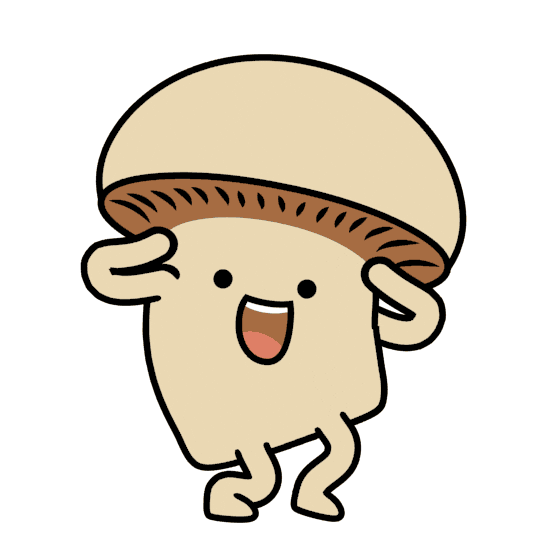
Vous pouvez facilement améliorer votre anglais en apprenant à éviter ces fautes que beaucoup commettent !
Pour ce faire, on va d’abord voir comment et quand utiliser l’apostrophe en anglais.
Et surtout, on va aussi parler de quelque chose qui est bien trop souvent négligé alors que c’est à l’origine de pas mal d’erreurs (y compris chez les natifs !) : 👉 quand ne PAS utiliser d’apostrophe en anglais ! 👈
Mode anglais = ON !
L’article est rédigé en anglais mais pas de panique ! Quand je présente ce point à mes élèves, je le fais en anglais. Why? Parce que ça les oblige à se mettre en mode anglais (une des choses les plus dures à faire quand on est débutant en anglais, voire même pour certains qui ont un niveau intermédiaire).
Ainsi je ne vais pas seulement vous aider à assimiler l’utilisation de l’apostrophe en anglais mais en plus je vous aide à introduire de l’anglais dans votre journée. Faites de votre mieux pour inclure autant que possible de l’anglais dans votre quotidien ! I know 🙄, c’est un point que je répète tout le temps mais c’est parce que c’est très important même vital si vous voulez vraiment progresser en anglais !
Et vous verrez que j’utilise du langage assez simple (si c’est pour vous perdre je ne vois pas trop l’intérêt…). Bien sûr si vous avez un doute ou des choses que vous ne comprenez pas 💭, écrivez-moi ! La partie commentaire est faite pour ça ! 😉
Allez c’est parti pour maîtriser ces apostrophes en anglais !
First of all
Avant tout, retenez que dans la langue anglaise l’apostrophe sert à deux ✌️ choses :
💎 le plus souvent elle sert à faire des contractions,
💎 ou dans d’autres cas, à indiquer la possession.
Dans le 1er cas, elle indique l’omission d’une ou plusieurs lettres.
On va voir que dans le 2ème cas, l’apostrophe permettra parfois d’omettre même tout un mot entier !
Notez bien qu’en anglais, les contractions sont utilisées à l’oral. Elles sont également employées à l’écrit mais plutôt dans un contexte familier.
Il est préférable de ne pas utiliser les contractions dans un contexte formel.
Aujourd’hui, je ne vais aborder que l’apostrophe -s. Il existe bien sûr d’autres apostrophes en anglais. Elles sont utilisées dans les contractions qui méritent un article à part. 🔜
When to use -s apostrophes?
1) Apostrophe for contractions:
For contracted forms, to show that something is missing.
E.g.: It’s (= is) warm outside. It’s (= has) been great to finally meet you!
There will be an entire article on how to use contractions in English. 😉
2) Apostrophe for possessive:
To show something belongs to somebody.
E.g.: This is Sylvain’s table. My mum’s car is red. The children’s toys are in the kitchen.
The apostrophe substitutes for the prepositions of, by, with and for.
E.g.: I have a doctor’s appointment (= appointment with the doctor) next Wednesday.
Shakespeare’s plays (= plays by Shakespeare) are amazing! 🎭
Special uses of the possessive apostrophe (omission of the word it refers to):
□ When you’re talking about a place of residence
E.g.: I’m spending the night at my mother‘s (= my mother’s house).
□ When you’re talking about names of jobs (trades or professions), when we are talking about the place where the work takes place.
E.g.: Yesterday, she went to the doctor‘s. 🩺
Here are the most common ones (a good way for you guys to improve vocabulary 😉):
- baker’s 🍞,
- barber’s 💈,
- blacksmith’s 🔨,
- bootlegger’s 💿
 ,
, - butcher’s 🍖,
- confectioner’s 🍫🍮🍬🍩,
- dentist’s 🦷,
- doctor’s ⚕️,
- dry cleaner’s
 👚,
👚, - florist’s 💐,
- grocer’s🥫,
- greengrocer’s 🍓,
- hairdresser’s✂️,
- jeweller’s/jeweler’s 💍,
- newsagent’s/news agent’s 📰,
- stationer’s 📎🖊️📝,
- tailor’s 🧵🤵,
- undertaker’s ⚰️⚱️
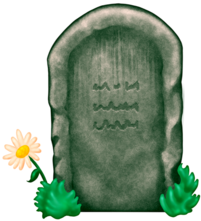 ,
, - vet’s 🐾🩺 …
□ When a business name is based on a family name, even though the apostrophe tends to disappear (as in Harrods).
E.g.: Last night we went to Sainsbury‘s to buy chocolate. 🍫😋
□ When you’re talking about something or somebody and the meaning is clear (so there’s no need to repeat)
E.g.: Donovan: Whose* fancy car is that?
Mary: It’s Kate’s.
Donovan: And whose parking lot (UK: car park) is it?
Mary: It’s hers* too!
* ⚠️ There is no apostrophe here because in this case, just like in French, you use possessive pronouns, that’s what they’re for.
Whose is the possessive form of the pronoun who. Here it’s used as an interrogative adjective ❔ (there are other interrogative adjectives such as what and which).
Hers is the singular third person feminine possessive pronoun. We will deal with this more fully toward (UK: towards) the end of the article. 😉
3) In several medical conditions 😷
The noun part of a medical condition (such as syndrome or disease) is sometimes dropped, as in Alzheimer‘s (= Alzheimer’s disease), Down‘s, Raynaud’s…
E.g.: He was given a false diagnosis of Down‘s for his child.
4) Public restrooms 🧻
There are sort of euphemisms to talk about gender-separated public restrooms (initially referenced as the gentlemen’s and ladies’ lavatory- or toilet-rooms).
Today we generally say men’s and ladies’ rooms, with the word room being sometimes omitted:
🚹 = men’s (rest)room, men’s, gentlemen’s, gents’ (UK), gents (UK)
🚺 = women’s/ladies’ (rest)room (US), ladies’ (UK), ladies (UK)
E.g.: Could you tell me where the ladies is? (UK)
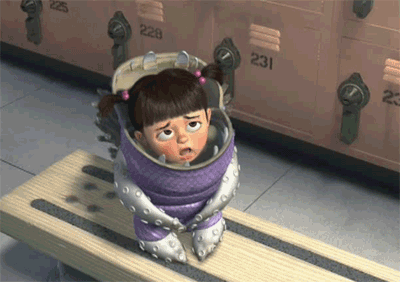
How to use the possessive apostrophe for words ending in ”s”?
◇ for a name (of a person, city, country…) ending in -s 🡆 2 options: you can add either ’s or just the apostrophe
E.g.: Charles‘s cat is white. = Charles‘ cat is white.
One of Texas‘s most famous sites is the Alamo. = One of Texas‘ most famous sites is the Alamo. ![]()
◇ a singular word and a plural word ending in -s 🡆 add only an apostrophe (NO -s!)
E.g.: My parents’ house is ten minutes away.
I’m going to stay at my parents’ tonight.
NB: Nothing weird (= strange) happens when you have to put apostrophe -s at end of an irregular plural! It just follows the usual apostrophe rules. Piece o’ cake! 🍰 (= a piece of cake = very easy = ![]() : fastoche!)
: fastoche!)
E.g.: The children’s toys are broken! Who did this!
And when the irregular plural ends with an -s, the same rule applies as with words ending in -s:
E.g.: This species’ main goal is to make people smile with its funny-looking body. 😝
[And don’t forget to learn these irregular plurals, I’ve got you covered! (= j’ai ce qu’il vous faut) It’s over here: 👑 English is coming : le pluriel + un conseil pour progresser en anglais (Partie 1/2)]
When not to use apostrophes! 🚫
Watch out for the greengrocer’s apostrophe! 🍏
Never use the apostrophe for plurals (unless it’s really needed)!! 🚨
In English-speaking countries, sometimes you will see signs in shops and cafés advertising pizza’s, sandwich’s, banana’s… This is called the “greengrocer’s apostrophe”. It’s incorrect and you will lose marks if you do this mistake in an English exam.
BUT there are a few exceptions:
Sometimes certain abbreviations, letters or words (like numbers) used as nouns can have an apostrophe to avoid misreading or confusion.
E.g.: Jake received six B’s and only two A’s.
Don’t forget to cross your t’s and dot your i’s.
Skiing is spelt with two i’s.
You used five and’s in only one sentence!
And here comes the very controversial use of apostrophes in the phrase (= utilisation des apostrophes très controversée dans l’expression) do’s and don’ts (also dos and don’ts).
+ the controversial apostrophizing of decades which seems to be more American and which tends to disappear: the Roaring Twenties ➞ the Roaring 20’s/1920’s (more info on how to write decades over here: Apprendre l’anglais en chanson 🎶)
Watch out for these! ⚠️
We’re going to end this whole apostrophe lesson with something that is the root to many common mistakes in English. We’ve already seen it in this very lesson: the possessive pronouns! 🚨
As I explained earlier, these don’t need to have an apostrophe to show possession since they already exist only for this exact purpose of indicating possession!
It’s a pronoun used to show possession or ownership. So it means that it replaces the noun in a clause.
Here is a table (in 2 parts) of all the possessive pronouns with the corresponding personal pronouns and possessive adjectives:
Be especially careful with the commonly confused who’s 🆚 whose & it’s 🆚 its
These are probably the two words which cause more problems with apostrophes than any others, so be very careful! 🚨
Its and whose are possessive adjectives:
Whose is the possessive form of the pronoun who (sometimes it’s also an interrogative pronoun or interrogative adjective).
Its is the possessive form of the pronoun it.
It’s and who’s are contractions:
It’s = it is
Who’s = who is/has
So remember: 👇
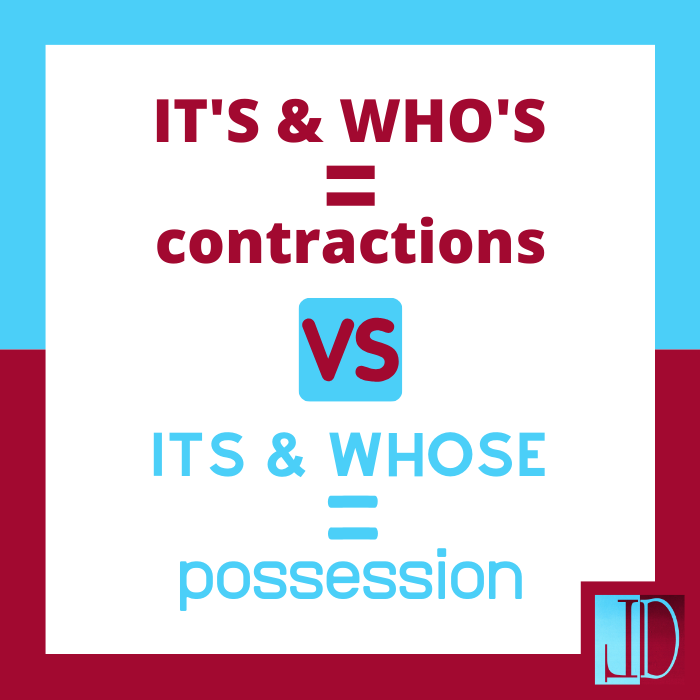
E.g.: It’s a perfect day for a bike ride! (contraction)
My car doesn’t start. I think its engine is broken. 😟 (possession)
Whose boots are these? 👢 (possession)
Who’s coming with me? (contraction)
🧠 Tip to remember the difference : apostrophe = contraction
It’s easy to remember which one is which : the option with the apostrophe -s is the contraction because it is the apostrophe’s role to show the contraction of a word.
There you have it! 👏
Et voilà, vous savez tout sur l’apostrophe -s en anglais ! Finies les erreurs courantes pour ce point qui revient très souvent dans la langue anglaise.
Yep, you really are one step closer to speaking English fluently! 🎉
You will get there step by step! 😉
Eh oui, apprendre à parler anglais se fait petit à petit, en franchissant des sortes de petites étapes une à la fois, chacune représentant une jolie progression, une petite victoire à ne pas oublier !
Il est important de prendre conscience de sa progression, ça va vous motiver et verrez plus clairement ce qu’il vous reste à faire et touuuut ce que vous avez déjà fait ! N’oubliez pas de vous rappeler ces petites réussites !
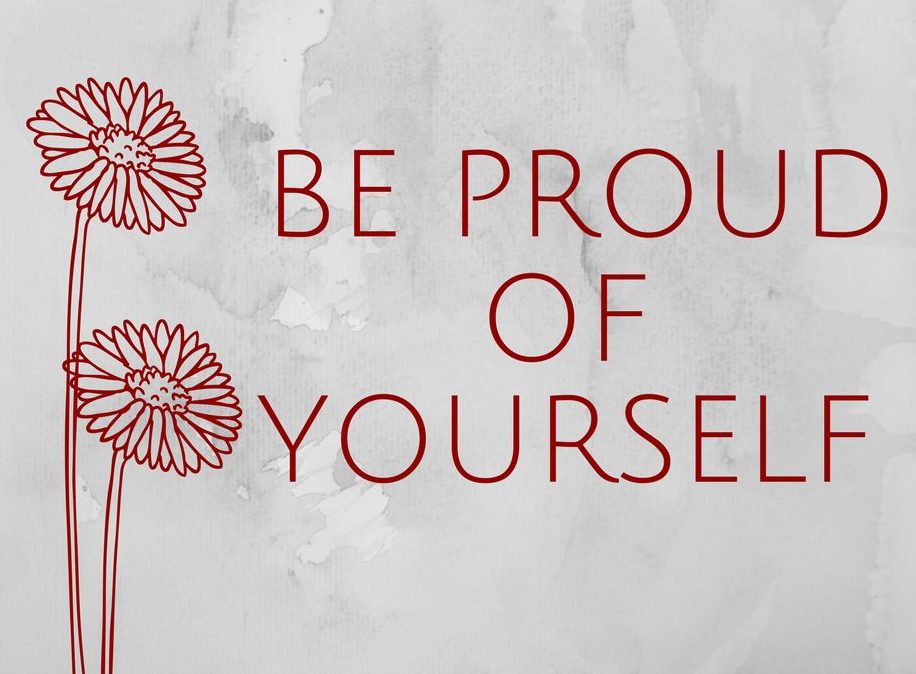
Happy learning day to you! 🌞

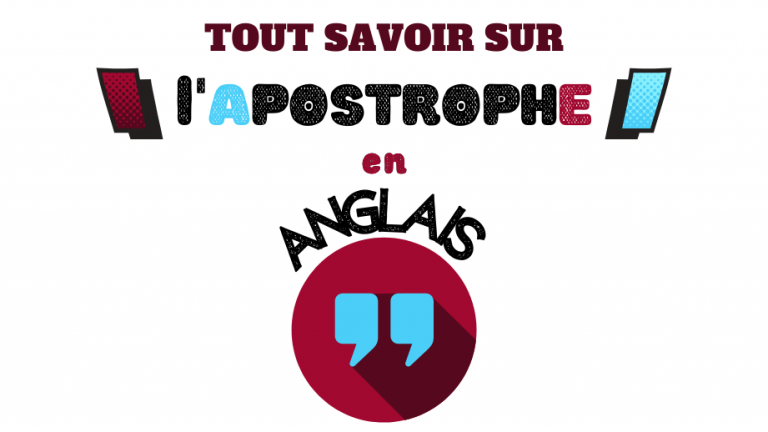
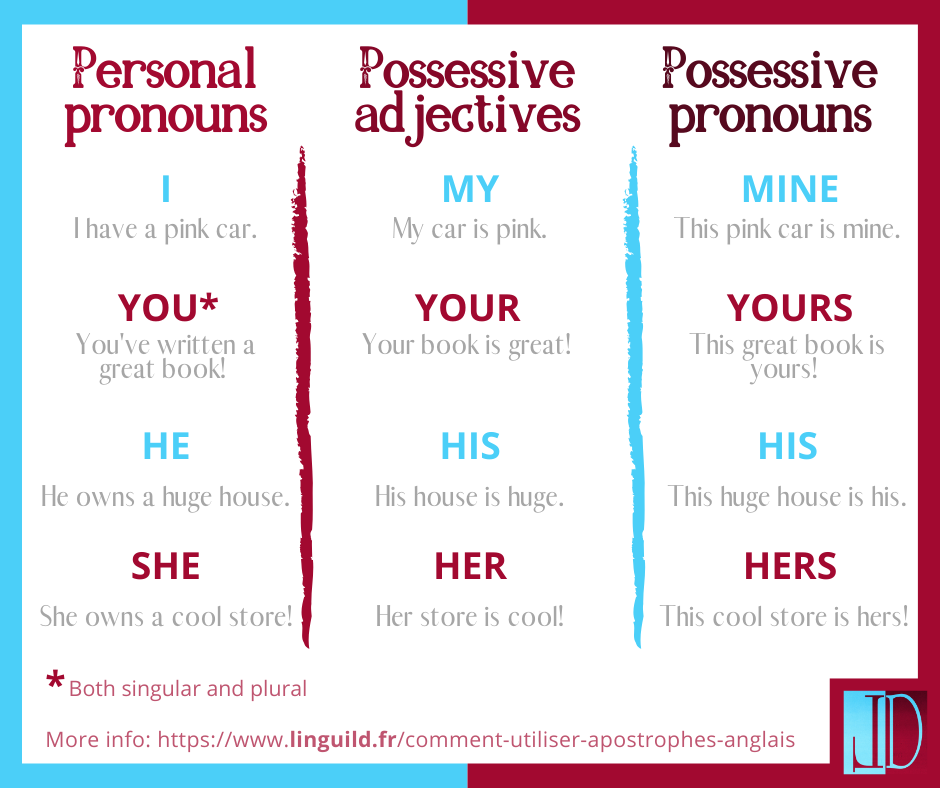
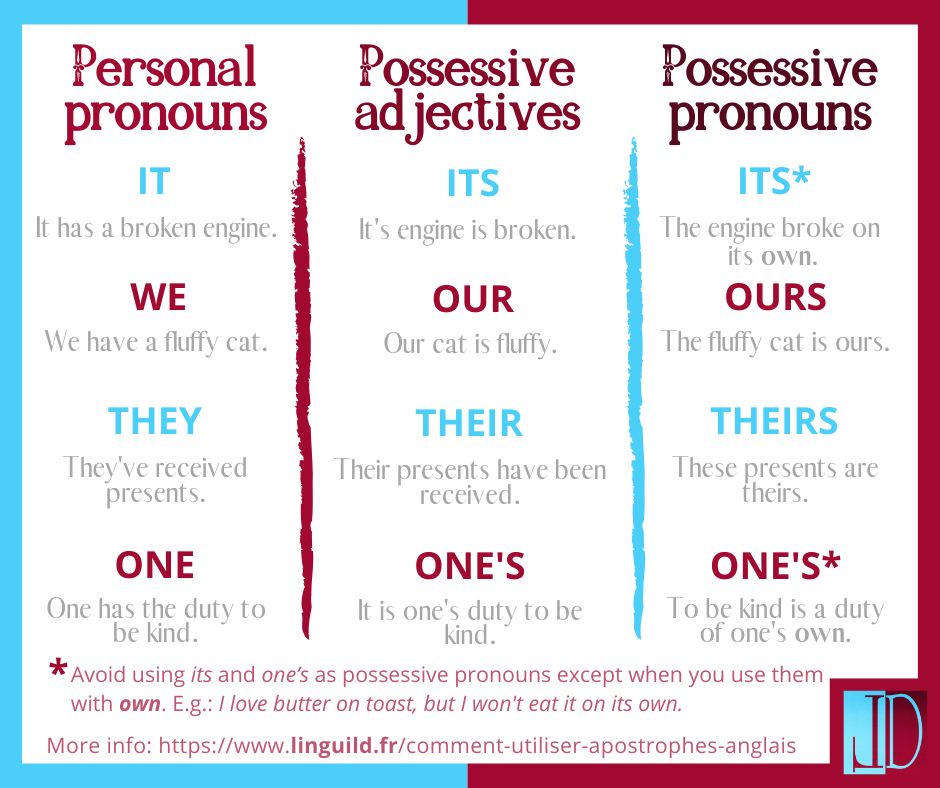



Voilà une explication très complète ! Merci, il y avait des choses sur lesquelles j’avais un doute, maintenant c’est plus clair 🙂
Merci ! Heureuse d’avoir pu t’aider ! 😃